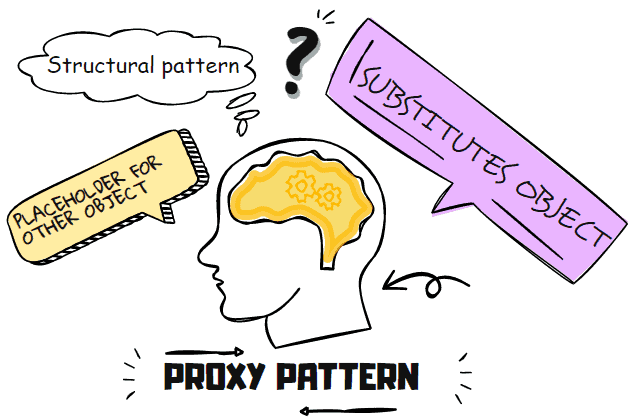Table Of Content

Create a class file named SharedFolder.cs and copy and paste the following code. This class implements the subject (ISharedFolder) interface and provides implementations for the PerformRWOperations. This is the Real Object where the Manager or CEO will perform the Read and Write Operations.
Proxy Pattern C++ Design Patterns
AutoGen: Enabling next-generation large language model applications - Microsoft
AutoGen: Enabling next-generation large language model applications.
Posted: Mon, 25 Sep 2023 07:00:00 GMT [source]
An excellent real-world example of the Proxy Design Pattern in the Python Standard Library is the weakref module. A weak reference is a pointer to an object that doesn't prevent the object from being garbage collected. Hence, it's a kind of proxy that references the original object without preventing it from dying. To act as substitute for a subject, a proxy must implement the Subject interface.Clients can't tell whether they work with a subject or its proxy.
Chaining of Proxies
Let’s delve into the world of the Proxy Design Pattern, learn how to use it in Python, discover its pros and cons, and look at its usage in the Python standard library. A user shouldn’t be able to change person’s age to a string value, or give them an empty name. Or if the user is trying to access a property on the object that doesn’t exist, we should let the user know.
Types of Structural Patterns

The local object is a proxy for the remote object, and method invocation on the local object results in remote method invocation on the remote object. An example would be an ATM implementation, where the ATM might hold proxy objects for bank information that exists in the remote server. What we can do here is, in between the employees and the shared computer, we need to introduce the Folder Proxy.
Better Load Balancing: Real-Time Dynamic Subsetting - Uber
Better Load Balancing: Real-Time Dynamic Subsetting.
Posted: Tue, 17 May 2022 07:00:00 GMT [source]
A protection proxy might be used to control access to a resource based on access rights. When accessing sensitive objects, for example, it should be possible to check that clients have the needed access rights. It also implements the Image interface, maintaining a reference to the real image object.

In this design, it defines the display() method that both RealImage and ProxyImage must implement. This ensures a uniform interface for clients interacting with image objects. The Proxy pattern suggests that you create a new proxy class with the same interface as an original service object. Then you update your app so that it passes the proxy object to all of the original object’s clients. Upon receiving a request from a client, the proxy creates a real service object and delegates all the work to it.
Virtual Proxies
A better solution would be to display images only when actually needed. In this sense, we can use a proxy to wrap the existing ImageViewer object. This way, the actual image viewer will only get called when the image needs to be rendered. If we assume there exists a class, ImageViewer, responsible for loading and displaying images - we might implement our file manager by using this class directly. This kind of approach seems logical and straight-forward but it contains a subtle problem.
Mastering Design Patterns — 11: A Comprehensive Guide to the Proxy Design Pattern
A Proxy Method or Proxy Design Pattern is a structural design pattern that provides a surrogate or placeholder for another object to control access to it. This pattern involves creating a new class, known as the proxy, which acts as an intermediary between a client and the real object. The Proxy Pattern in C++ is a valuable tool for enhancing the control and efficiency of your applications.
The Proxy Method Design Pattern in Java is a valuable tool for enhancing control, security, and performance in software systems. When applied correctly and carefully, this pattern provides a modular and flexible approach to extending or modifying the behavior of objects. The pattern provides an effective mechanism for controlling access, optimizing performance, and adding functionalities without directly altering the original object. We have to create a simple banking application with a proxy to control access to the real bank account. For a more general introduction to design patterns, refer to this overview article, which is an excellent starting point for exploring the fascinating world of software design patterns.
In simple terms, the Proxy Pattern is like having a middle person (proxy) who decides when to get help from the real expert (real object) and when to handle things themselves. It’s a way to manage and control access to someone’s skills without bothering them unnecessarily. Knowing how to efficiently access those resources while providing appropriate access control is therefore crucial for building scalable and secure applications.
As an example, In Spring AOP you create proxies of the objects that handle the cross cutting concern code. The Proxy pattern also forms the core foundation of remoting technologies that Spring supports, such as RMI, Spring’s HTTP Invoker, Hessian, and Burlap. Through the use of a proxy, the upstream software is unaware it is using a remoting technology.
And if everything is fine, the bank employee gives the required money to Anurag. According to the Gang of four definitions, the Proxy Design Pattern provides a surrogate (act on behalf of another) or placeholder for another object to control access to it. In proxy pattern, we create object having original object to interface its functionality to outer world. In the ReportGeneratorImpl class above, we wrote very simple method implementations of the ReportGenerator interface. We have even left the displayReportTemplate() method empty, as we would like the proxy to implement it. To apply the Proxy pattern to our report viewer example, we will first write the ReportGenerator interface, which is the Subject.

No comments:
Post a Comment